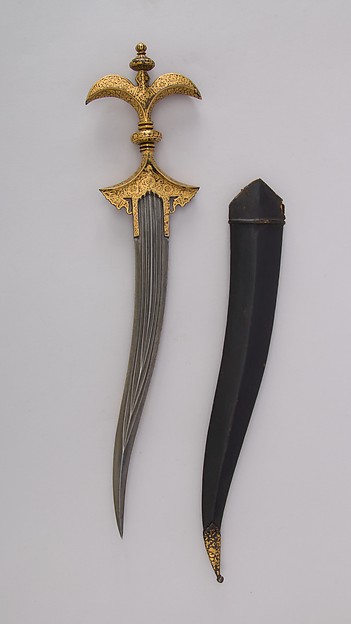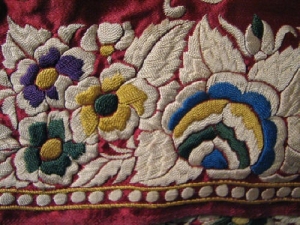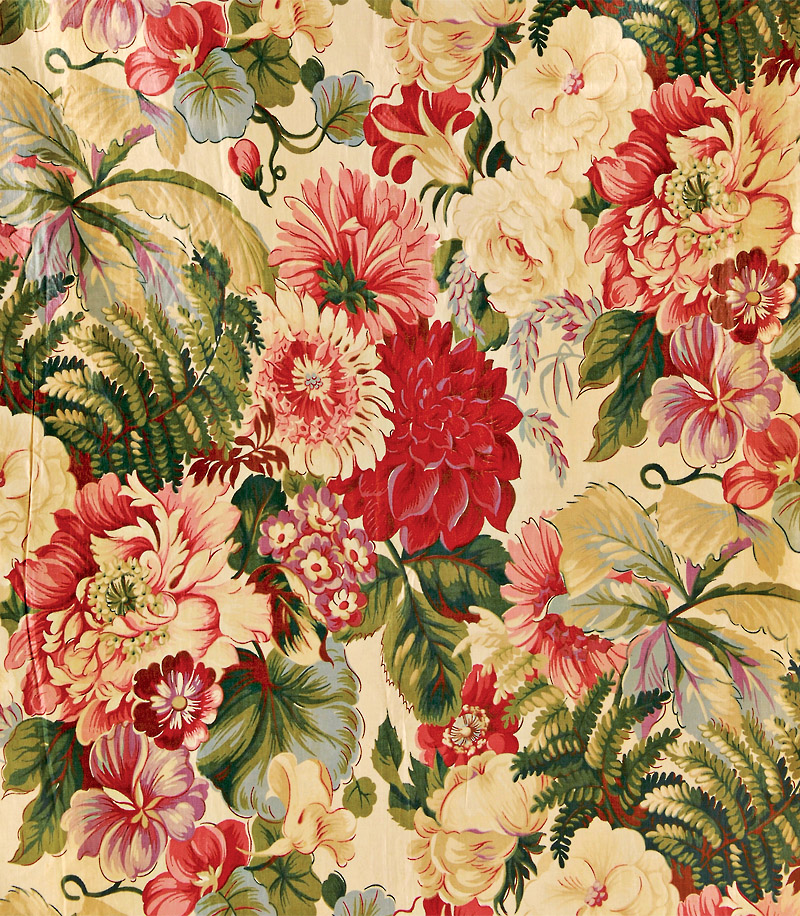Chilanum,
The chilanum, a dagger with a double-edged, recurved blade, generally has two or more grooves. The hilt is beautifully designed with a wide forked pommel topped by a button and the quillons are of similar shape. Occasionally it has a knuckle guard. It is not clear whether the origins are Maratha or Nepalese.
The chilanum, a dagger with a double-edged, recurved blade, generally has two or more grooves. The hilt is beautifully designed with a wide forked pommel topped by a button and the quillons are of similar shape. Occasionally it has a knuckle guard. It is not clear whether the origins are Maratha or Nepalese.
Chinai,
Silk embroidery on silk produced by Chinese embroiderers in Surat in Gujarat during the 19th and early 20th centuries, depicting Chinese motifs and using Chinese techniques.
Silk embroidery on silk produced by Chinese embroiderers in Surat in Gujarat during the 19th and early 20th centuries, depicting Chinese motifs and using Chinese techniques.
Chini,
Term of the most refined variety of silk i.e. mulberry, probably introduced into India from China and hence the term.
Term of the most refined variety of silk i.e. mulberry, probably introduced into India from China and hence the term.
Chint,
Hindu word meaning coloured and variegated which became corrupted in England to ‘chintz’: a printed floral cotton furnishing fabric on a white or natural ground.
Hindu word meaning coloured and variegated which became corrupted in England to ‘chintz’: a printed floral cotton furnishing fabric on a white or natural ground.
Chintz,
A mordant-painted and sometimes batik resist-dyed Indian cotton fabric which usually features an elaborate flowering tree of life on a rocky mound. Though in English the term is generally applied to highly glazed, printed cotton.
A mordant-painted and sometimes batik resist-dyed Indian cotton fabric which usually features an elaborate flowering tree of life on a rocky mound. Though in English the term is generally applied to highly glazed, printed cotton.
Chitrakathi / Chitrakatha,
The Chitrakathis, a nomadic community of storytellers, were once found all over Maharashtra and some parts of Andhra Pradesh and Karnataka. Until quite recently they would travel from village to village, unpack their pothi or bundle of rectangular paintings, and narrate myths and legends from the epics, folklore and local legends preserved in their oral tradition.
The painted narratives or Chitrakatha now mainly from Pinguli, Maharashtra, are executed in rectangular panels, generally pasted back-to-back on both sides. They are held up for the audience by means of a bamboo stick and used as aids to narration of legends to the accompaniment of music and songs. There is no clear demarcation of foreground or background and the figures seem to converge and superimpose in a style characteristic of these paintings.
The Chitrakathis, a nomadic community of storytellers, were once found all over Maharashtra and some parts of Andhra Pradesh and Karnataka. Until quite recently they would travel from village to village, unpack their pothi or bundle of rectangular paintings, and narrate myths and legends from the epics, folklore and local legends preserved in their oral tradition.
The painted narratives or Chitrakatha now mainly from Pinguli, Maharashtra, are executed in rectangular panels, generally pasted back-to-back on both sides. They are held up for the audience by means of a bamboo stick and used as aids to narration of legends to the accompaniment of music and songs. There is no clear demarcation of foreground or background and the figures seem to converge and superimpose in a style characteristic of these paintings.
Chlorinated wool,
Wool treated with chlorine to decrease the amount of shrinkage and to increase the uptake of dye, and as a preparation prior to printing.
Wool treated with chlorine to decrease the amount of shrinkage and to increase the uptake of dye, and as a preparation prior to printing.
Choke,
Very tight, but temporary ties spaced every two yards along the warp bout to keep the threads secure.
Very tight, but temporary ties spaced every two yards along the warp bout to keep the threads secure.
Chola,
Backless bodice or blouse which forms part of the woman's costume in Gujarat, Rajasthan and Sindh.
Backless bodice or blouse which forms part of the woman's costume in Gujarat, Rajasthan and Sindh.
Chope,
A phulkari shawl made by the maternal grandmother of a Punjabi girl for presentation at her wedding. The chope is embroidered with a type of double darning stitch so that the design will appear identical on both sides of the shawl.
A phulkari shawl made by the maternal grandmother of a Punjabi girl for presentation at her wedding. The chope is embroidered with a type of double darning stitch so that the design will appear identical on both sides of the shawl.



